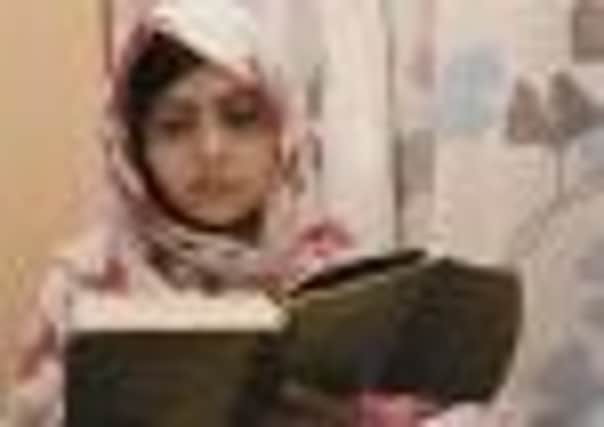Girls shot by Malala gunman back at school


Shazia Ramazan, 13, who was wounded by the same Taleban gunman who shot her friend Malala Yousufzai, returned home last week after a month in a hospital, where she had to relearn how to use her left arm and hand. Memories of the Taleban bullets that ripped into her remain, but she is welcoming the future.
“For a long time it seemed fear was in my heart. I couldn’t stop it,” she said. “But now I am not afraid,” she added, self-consciously rubbing her left hand where a bullet pierced straight through just below the thumb.
Advertisement
Hide AdAdvertisement
Hide AdNow Shazia and her friend Kainat Riaz, who was also shot, are to return to school for the first time since the 8 October attack when a Taleban gunman opened fire on Malala on a bus leaving the Khushal School for Girls, wounding Shazia and Kainat in the hail of bullets.


The Taleban targeted Malala because of her outspoken and relentless objection to the group’s regressive interpretation of Islam that keeps women at home and bars girls from school.
Malala is still undergoing treatment in the UK. Among her friends in her home town of Mingora in the Swat Valley, she is a hero. “Malala was very brave and she was always friendly with everyone. We are proud of her,” said Kainat, 16. Her mother, Manawar, a health worker, sitting by her side, praised her daughter’s bravery and, with a smile, said: “She gets her courage from me.”
Quick to laugh, Kainat looked forward to returning to school. “I want to study. I am not afraid,” she said.
The authorities, however, are not taking any chances. Armed policemen have been deployed to Shazia’s and Kainat’s homes and will escort them to school.
Kainat’s home is hidden behind high walls and 8ft-high steel gates. Outside Shazia’s home, a policeman wearing a bullet-proof vest sits on a plastic garden chair with a Kalashnikov resting on his knees. Three policemen patrol a nearby street.
Shazia, who wants to become an army doctor, is a stubborn teenager. She doesn’t want the police escort. “They say I need the police, but I say I don’t need any police,” she said, pushing her glasses firmly back on her nose. “I don’t want the police to come with me to school because then I will stand out from the other students. But I shouldn’t.”
At their school, pupils display a giant poster of Malala and are quick to attack the Taleban. The school, which has more than 500 pupils, closed its doors only briefly at the height of the Taleban’s hold on the region in 2008 and early 2009. It was then Malala began to blog, recording her unhappiness with edicts ordering girls out of school.
Advertisement
Hide AdAdvertisement
Hide AdAlthough she was barely nine years old then, Shazia remembers those days. “Times were very bad,” she said. “Girls were hiding their books under their burqas. Compared to then, now is a very good time. We are strong.”
Each morning, the headteacher now gives the students a progress report on Malala’s condition. “She is getting better every day and she asks about all of us and what we are doing,” said Mahnoor, 15, one of Malala’s close friends. “When it happened, we just cried and prayed. We were just worried for her.”
Emar, 12, said of the Taleban: “They are thinking that she is a girl and she cannot do anything. They are thinking that only boys can do things. They are wrong. Girls can do anything.”
Speaking in English, Gulranga Ali, 17, said students had “got courage from her [Malala] and everyone is attending school. No-one is staying at home”.
She said the attack has turned the country against extremists and “now every girl and child is saying ‘I want to be Malala’.”
Malala’s father says the family will return to Pakistan after his daughter is well enough.
But her classmates worry for her safety. “I don’t think she will come for education any more in Swat. She will not be safe here,” said Gulranga.